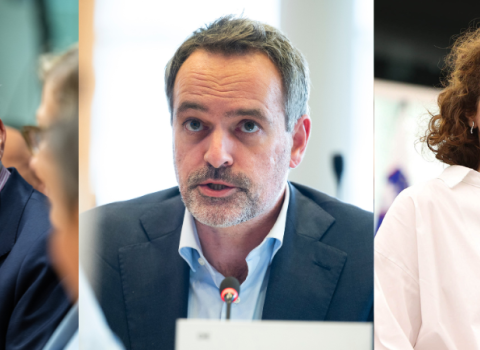Three European pioneers of “nanomachines” —molecules that move — have won the 2016 Nobel prize for chemistry.
The trio, Jean-Pierre Sauvage, Fraser Stoddart and Bernard Feringa, will equally share the prize of 8 million Swedish kronor, or about €1 million.
They are credited with developing molecules with movable parts that produce controlled motion when energy is added.
“The laureates have opened this entire field of molecular machinery. They have shown it is possible to make a machine at the molecular scale,” said Göran Hansson, secretary general of the Swedish Academy of Sciences.
One application of the versatile molecules, invisible to the human eye, could be tiny medical robots that can travel through the bloodstream to search out a cancer cell or deliver medicine to a precise spot.
The Nobel committee compared the laureates’ work to breakthroughs in electric motors in the 19th century saying, “In terms of development, the molecular motor is at the same stage as the electric motor was in the 1830s, when scientists displayed various spinning cranks and wheels, unaware that they would lead to electric trains, washing machines, fans and food processors.”
The laureates
Sauvage, emeritus professor at the University of Strasbourg and director of research emeritus at the French National Centre for Scientific Research, is credited with taking the first step towards a molecular machine when, in 1983, he succeeded in linking two interlocked ring-shaped molecules together to form a chain, called a catenane.
Stoddart, a Scottish researcher currently affiliated to the Northwestern University in the US, took the next step in 1991 when he threaded a molecular ring onto a thin molecular axle and demonstrated that the ring was able to move along the axle.
Feringa, a professor in organic chemistry at the University of Gröningen in the Netherlands, became the first person to develop a molecular motor when he got a molecular rotor blade to spin continually in the same direction in 1999.
Before the chemistry prize was announced, the 2016 Nobel in medicine or physiology was awarded on Monday to Japanese cell biologist, Yoshinori Ohsumi, for discoveries on how cells break down and recycle their own components, a process known as autophagy.
On Tuesday, three British physicists, David Thouless, Duncan Haldane and Michael Kosterlitz, won the physics prize for their work on exotic states of matter.
The early research was conducted at Birmingham University, but like Stoddart, the other British-born winner this week, all three physics prize winners joined a brain drain to the US.
Thouless, was born in Scotland and now works at the University of Washington in Seattle. London-born Haldane is at Princeton University, and Kosterlitz, also from London, now works at Brown University in Rhode Island.
Funders toast wins
The European Research Council (ERC) yesterday toasted Feringa, who received nearly €5 million in ERC grants in 2008 and 2015.
The winners’ research has “taken chemistry into a new dimension,” said Carlos Moedas, EU Research Commissioner. “I am proud to see that EU support has enabled them to push the frontiers of human knowledge and ultimately benefit the society and economy.”
Feringa is the sixth ERC grantee to win a Nobel. Previous ERC-affiliated winners include Edvard Moser and May-Britt Moser in 2014 for their discovery into how the brain knows where we are and is able to navigate from one place to another.
The UK’s Engineering and Physical Sciences Research Council (EPSRC) hailed Stoddart’s win saying he has worked on over 20 EPSRC-funded projects during his career, including some international collaborations while based in the US. “His work on nanostructures will have real-world impact,” said Philip Nelson, EPSRC chief executive.





 A unique international forum for public research organisations and companies to connect their external engagement with strategic interests around their R&D system.
A unique international forum for public research organisations and companies to connect their external engagement with strategic interests around their R&D system.